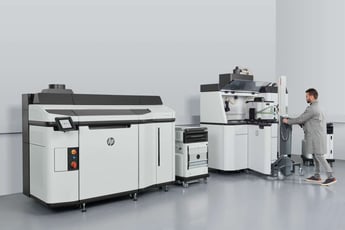In the fields of engineering and 3D design, machine tools are essential for producing parts and components. Two widely used types are traditional manually operated machine tools and computer numerical control (CNC) machines.
Differences between CNC and traditional machine tools
Traditional machine tools have been used for decades in manufacturing and remain a staple production method. These tools are manually operated, requiring the operator to adjust cutting speed, axis movement, and other variables throughout the machining process. Achieving high-quality results demands significant skill and precision.
CNC machines, on the other hand, are controlled by a computer. The operator loads a CAD/CAM program into the machine, which then automatically handles the machining—managing axis movements and cutting speeds. Thanks to automation, CNC machines achieve higher precision and repeatability compared to traditional tools.
Advantages of CNC Machines
-
Greater precision: Automation reduces human error and ensures better quality of the produced parts.
-
Ability to perform complex operations: CNC systems can easily execute intricate 3D shapes and work with materials that are difficult to cut using traditional methods. They can run a CAD/CAM program repeatedly to produce multiple identical parts with consistent results.
-
Improved productivity: Because the machining process is automated, CNC machines can operate continuously for long hours without constant human intervention. This reduces production times and increases overall capacity. Additionally, CNC machines can work with higher cutting speeds compared to traditional machines.
-
Repeatability: Once the CAD/CAM design is created, the desired result can be effortlessly replicated across numerous identical parts.
Applications of CNC machines
CNC technology is widely used across multiple industrial sectors, including:
-
Automotive: For the production of precision components such as pistons, crankshafts, and gears.
-
Aerospace: For producing lightweight and complex parts for aircraft and satellites.

.png?height=420&name=NIUO_testate_articoli_blog%20(9).png)

.png?height=230&name=NIUO_testate_articoli_blog%20(7).png)